FAMOUS TRIALS
The Leonard Peltier Trial (2006)
by Douglas O. Linder
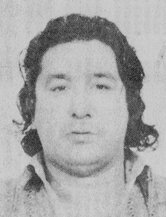
Did Leonard Peltier, at close range with his AR-15, execute two FBI agents who had entered the Pine Ridge Reservation? Peltier's prominent supporters, including author Peter Matthiessen (who wrote a book on the Peltier case entitled In the Spirit of Crazy Horse) and Hollywood director and film star Robert Redford (who filmed a documentary about the case entitled Incident at Oglala), suggested in their accounts that Peltier was the innocent victim of unscrupulous government law enforcement agents and prosecutors. On the other hand, the federal law enforcement community and--most importantly--a federal jury in Fargo believed that Peltier committed first-degree murder on that June day in South Dakota. Peltier's defenders, both inside and outside the American Indian Movement, consider him to be America's foremost political prisoner. To many others, however, Peltier is nothing more than a brutal killer who deserves to spend the rest of his days in a federal penitentiary in Lewisburg, Pennsylvania. What really happened on June 26, 1975? Did Peltier get a fair trial? Is it time to free Leonard Peltier?
Background
The American Indian Movement (AIM) was founded in Minnesota in 1968 by Eddie Benton Banai, George Mitchell, Dennis Banks, and Clyde Bellecourt. The organization promoted traditional Native American culture and sought to instill pride in the Native American community. AIM's targets included both the federal government, with whom it had a long list of grievances (especially focused on its record of many broken treaties--including the 1868 Ft. Laramie treaty, which resulted in the loss of nearly all of their land in the sacred Black Hills region of South Dakota) and assimilationist or "progressive" Indians, who they believed undermined native traditions and solidarity.
In February 1973, AIM instigated a seventy-one day takeover of the site of a famous 1890 massacre at Wounded Knee, South Dakota. The massacre, described vividly in the bestselling book Bury My Heart at Wounded Knee, resulted in the deaths--at the hands of the United States Calvary--of several hundred Sioux women and children. In response to the AIM protest, the United States sent troops and tanks. The standoff ended with two deaths and a series of trials of AIM leaders.
In the two years that followed, the Pine Ridge Reservation came under the control of the "progressives" and elected tribal leader Dick Wilson. Wilson proved to be a vicious and unscrupulous leader, using his power to attack "traditionalists." He enforced his will with the aid of a vigilante force called "GOONs (Guardians of the Oglala Nation)." In the years between 1973 and 1975, called "The Reign of Terror" by AIM, the Reservation saw over sixty unsolved murders and had the highest murder rate in the United States. More people were killed at Pine Ridge, with a population of about 12,000, than in the rest of the entire state of South Dakota.
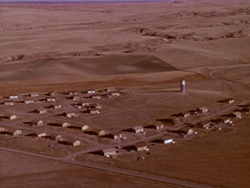
Ogala, S.D.
In 1975, traditionalists at Pine Ridge asked AIM leaders to send members to the Reservation to protect against further goon squad attacks. Among the AIM members to respond to the call was thirty-year-old Leonard Peltier who, at the time, was wanted in Wisconsin on charges of assault and attempted murder of a police officer. (Peltier, scheduled for a pre-trial hearing in July 1973, had jumped bail and fled to South Dakota.) AIM established a base of operations at Oglala, the town in the Pine Ridge Reservation with the highest concentration of traditionalist Indians. Hostility toward the federal government and cooperating progressives ran high at Oglala.
June 26, 1975
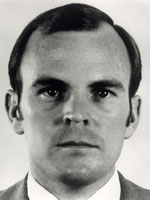
Special Agent Jack R. Coler
Around 11 a.m. on a hot and sunny June 26, 1975, FBI agents Jack R. Coler, 28, and Ronald A. Williams, 27, entered the Jumping Bull compound in Oglala intending to serve an arrest warrant on Jimmy Eagle, a young Indian accused of kidnapping and armed assault, who they believed might be driving a red pickup truck. The agents began following a orange and white Suburban that they believed contained Jimmy Eagle. In fact, the vehicle contained Peltier and two other AIM members, Norman Charles and Joseph Stuntz. Peltier--according to a report he later gave Canadian authorities--believed that the agents were looking for him, not Jimmy Eagle, and that they intended to arrest him on his outstanding Wisconsin attempted murder charge. The van pulled over and, according to later testimony, its occupants "hopped out." Gunfire erupted. The agents stopped their cars on the road. Shots soon rang out from the windows of homes comprising the nearby Jumping Bull compound, as well as from near the tree line. Peltier, from his position by a row of junked cars near the woods, repeatedly rose from a prone position to fire at the agents, then fell prone again. Additional AIM members, hearing the sound of gunfire, rushed toward the scene. The agents soon found themselves pinned down amidst crossfire and were wounded. Coler was hit, most likely from a bullet fired through his open trunk lid, near his left elbow. Transmissions received from the agents between 11:45 and 11:50 a.m. first reported them following "some guys in a pickup," then later the ominous news, "They're going to shoot at us," then "We're pinned down in a cross-fire between two houses," and finally, "I have been hit."
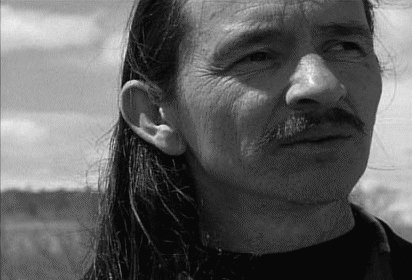
Robert Robideau
No one knows who fired the shot that severely injured Coler, but it is undisputed that in addition to Leonard Peltier, Bob Robideau and Dino Butler --two other Indians who would be charged with murder--were among the Indians who fired some of the 125 shots--114 of which came from an AR-15--from a distance in the direction of the two agents. The agents' situation was hopeless: between the two of them, the agents got off a total of five rounds. Soon after noon, Coler crawled through his car and passed out from loss of blood. Williams, injured--but less so, threw down his gun, stripped off his shirt and waved it as a flag of surrender. He then applied his shirt as a tourniquet around his fellow agent's shattered arm.
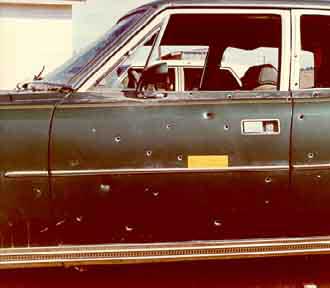
Bullet holes in the side of the Williams's car
Disputed testimony suggests that at this point Peltier, Robideau, and Butler approached the two agents. (Two Native American witnesses placed them near the agents' cars.) Minutes later, the two agents lay dead by their vehicles. Each died from gunshots to the head, fired at point-blank range. The pathology report suggested that Williams was killed with his hand held up to his face--the bullet that went through his head first blasted through his hand. Prosecutors would later suggest that Williams died begging for his life. Between the two of them, the agents got off a total of five rounds. The fatal .223-caliber bullets came from an AR-15 rifle. Witnesses reported seeing Peltier carrying an AR-15.
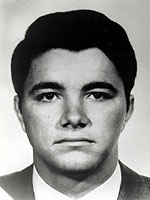
Special Agent Ronald Williams
Shortly after the shooting, Peltier, Robideau, and Butler were seen in Tent City, along with agent Williams's green car . (FBI agents recovered Robideau's fingerprints from the door handle on the driver's side of the car, and Robideau admits to having driven it to Tent City. Robideau claimed that "when we got to the car, the agents were already dead.") An ambulance team, responding to an urgent call, found itself also coming under gunfire when it arrived at Oglala. So did another FBI agent, Gary Adams, who arrived in the vicinity around noon and reported seeing a "red pickup" leaving the Jumping Bull area at 12:18. (Authorities contended later that the departing vehicle contained the murderers, buttressed by a witness's report of having seen Peltier, Butler, and Robineau loading up a "red and white van" shortly after the agents' deaths.) Later that day, the body of a third shooting victim (found clad in Coler's FBI jacket) was discovered in Oglala. The body was that of AIM member Joseph Stuntz, apparently gunned down from a distance by a BIA officer.
Investigation of the crime scene turned up a .223 shell casing in the trunk of one of the cars of the slain agents. No other casings were found--presumably because those responsible for the murders picked them up.
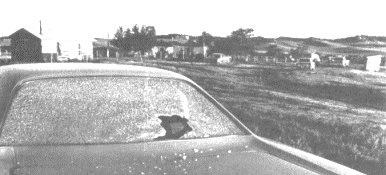
Jumping Bull Ranch, as seen from car
Ten weeks after the agents' murders, a van carrying Bob Robideau and other fleeing AIM members exploded on the Kansas turnpike near Wichita. An AR-15, Agent Coler's .308 rifle, and an arsenal of homemade explosives were found in the vehicle. The government would later argue that the AR-15 recovered in Kansas was the weapon used to kill Coler and Williams--and that it belonged to Leonard Peltier. The defense would question ballistics tests used to link the rifle to the shootings and argued that, in any event, Peltier was over 1,000 miles from Wichita and that there were several AR-15s on the Reservation, so there is no way of proving the gun belonged to him.
The far-flung investigation took a northwesterly turn on November 14, when an Oregon state trooper spotted someone who resembled Peltier riding in a Dodge Explorer motor home. The man believed to be Peltier gave the officer a false name--then took off into the night over a fence, firing in the trooper's direction. The driver of the motor home sped off, but the vehicle was later found abandoned, with the motor running, a couple of miles down the highway. A search of the vehicle turned out a paper bag containing Jack Coler's Smith and Wesson .357 magnum gun. A fingerprint on the bag matched that of Peltier. Agents also discovered nine grenades and dynamite in the RV. Peltier's fingerprints also turned up in an Oregon ranch home where guns recovered from the motor home had been reported stolen.
Acquittals in Iowa; Extradition from Canada
The federal government obtained indictments on murder charges against Peltier, Robideau, Butler, and Eagle. Charges against Eagle were subsequently dropped. Robideau and Butler were arrested, but Peltier remained on the loose, having fled the United States for Canada, leaving the government with just two defendants to prosecute in Cedar Rapids, Iowa.
Flamboyant and controversial defense lawyer William Kuntsler represented Butler and Robideau. Kunstler painted a picture of rising tensions and mutual distrust that characterized relations between AIM and the FBI. Agents were trigger-happy and so were AIM members. The shootings of June 1975 was a tragedy waiting to happen. "The agents are psyched out,...the American Indian Movement is psyched out," Kunstler told jurors. While suggesting that the Indians had a real fear of an all-out attack by the federal government, Kunstler also sought to discredit the key prosecution testimony of Indians who either saw the defendants near the agents' car or claimed to overhear the defendants discussing the slayings. Kunstler suggested that their testimony might have been influenced by promises of the government not to pursue charges against them. The defense attorney argued, "There is virtually no evidence on how these agents died."
The Cedar Rapids jury deliberated for five days, then declared itself "hopelessly deadlocked." Judge McManus, however, refused a defense motion to declare a mistrial and ordered the jury to continue its efforts to reach a verdict. Finally, it succeeded. The jury's verdict of "not guilty" came on July 16, 1976. The jury foreman, Robert Bolin, said, "The jury agreed with the defense contention that an atmosphere of fear and violence exists on the reservation, and that the defendants arguably could have been shooting in self-defense." The law enforcement community took the jury's verdict hard. According to one published newspaper account, "One of the South Dakota FBI agents close to the case had tears in his eyes as he walked down the federal building hall."
If anyone were to pay for what happened to Jack Coler and Ronald Williams, it would have to be Leonard Peltier.
After his close encounter with the trooper in eastern Oregon, Peltier found his way to Portland, and then crossed the border into British Columbia. He learned there that Robideau and Butler faced murder charges, and that his own face appeared on the FBI's "Ten Most Wanted Fugitives" list in post offices and law enforcement agencies. Feeling too conspicuous in predominately white southern Canada, Peltier headed north, first to B. C.'s Kamloops region, and then east to a remote native camp in Alberta. In early February, the Royal Canadian Mounted Police learned through an informer that Peltier could be found near Hinton, a town 160 miles west of Edmonton. The mounties discovered Peltier sitting in a schoolhouse next to a suitcase containing two loaded revolvers, one of which had been stolen from an Oregon farmhouse. Mounties transported Peltier to a Vancouver prison to await a hearing on his possible extradition to the United States.
The case for extradition rested on the Wisconsin "attempted murder" charge, murder charges relating to the deaths of the two FBI agents at Oglala, and attempted murder of an Oregon trooper. Under Canadian law, extradition was appropriate if evidence was presented that could convince any reasonable jury that the suspect was guilty of the charge or charges. The United States presented six witnesses and entered thirty affidavits in making its case for Peltier's extradition. Peltier, who asked for political asylum, presented ten witnesses on his behalf--most of whom stressed AIM's role at Oglala and tense situation that had existed between rival Indian groups and the federal authorities. The government's only direct eyewitness testimony came in the form of two affidavits signed by Myrtle Poor Bear. Poor Bear asserted that Peltier and others had not only planned the killings, but carried them out himself--and that she was with Peltier when he did it. "I saw Leonard Peltier shoot the agents," Poor Bear's affidavit stated. Angered at the shooting, Poor Bear (according to her affidavit) screamed at Peltier, hit him, and ran away. Another affidavit, one signed by an investigating FBI agent, asserted that the shell casing found in agent Coler's car had been matched by ballistics experts to an AR-15 rifle that witnesses saw Peltier carrying on the day of the shootings. On June 18, 1976, the Canadian judge ordered Peltier extradited on four of the five charges, including the two South Dakota murders. He did not find sufficient evidence to extradite on the charge of attempted murder relating to the shots fired at the police officer who pulled over the motor home in Oregon. The judge's extradition decision was appealed--and finally rejected by Canada's Minister of Justice in December 1976. On December 16, Peltier was transported from Vancouver to Rapid City, South Dakota.
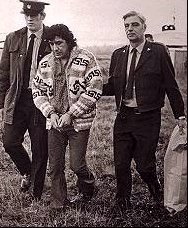
Peltier being arrested in Canada
The government's handling of Poor Bear--and her affidavits--later came under intense (and justified) criticism. The government withheld from Peltier's defense team the fact that Poor Bear had in fact signed three--not just two--affidavits, and that in the earliest of the three affidavits (the one not disclosed), Poor Bear had denied being present on the Reservation when the two agents were killed. Poor Bear, it is safe to say, was simply not a credible witness--and the government should have recognized her mental instability and not used the affidavits. (In 2003, The Tenth Circuit Court of Appeals, while rejecting an appeal of Peltier, made its disgust with government's handling of the case plain: "Much of the government's behavior at the Pine Ridge Reservation and its prosecution of Mr. Peltier is to be condemned. The government withheld evidence. It intimidated witnesses. These facts are not disputed.") Even without the Poor Bear affidavits, the government's case for extradition was compelling--and thus its overreaching completely unnecessary. A 1994 review by the Canadian government of the Peltier extradition decision found it to be entirely appropriate based on the strong circumstantial evidence presented by the United States.
Trial in Fargo
Federal Judge Paul Benson, assigned the Peltier trial, transferred the proceedings from South Dakota to his hometown of Fargo, North Dakota. U. S. Attorney Evan Hultman headed the prosecution team, while Ellie Taikeff, a New York lawyer, represented Peltier. An all-white jury of ten women and two men was selected to hear the case.
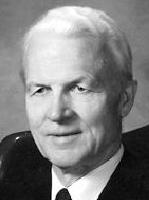
Federal Judge Paul Benson
Both the government and the defense substantially modified the strategies that they had used in the Cedar Rapids trial of Robideau and Butler. For its part, the government dropped its theory that the agents were the victims of a premeditated ambush, believing that the previous jury had found the theory too confusing and somewhat implausible in its particulars. The defense, on the other hand, conceded what it had tried to obscure in Cedar Rapids--that the agents had been the victim of point-blank, execution-style killings. The ballistics evidence on this point was too powerful to overcome. The defense concession about the close-up executions made the government's task considerably easier: it only had to establish that Peltier was one of the Indians who approached the agents--not necessarily the one that pulled the trigger, for him to be guilty under a felony murder theory.
Judge Benson handed the prosecution several early victories. He ruled that evidence concerning Dick Wilson's goon squads and the history of violence at Pine Ridge was inadmissible, putting the focus of the trial sharply on June 26, 1975. He also ruled that evidence concerning the verdict in the Cedar Rapids trial, as well as testimony from that trial, was inadmissible. He made the same call concerning Myrtle Poor Bear's dubious affidavits. Judge Benson did, however, rule admissible the gory photos of the slain agents, finding that the probative value of the photographs outweighed their tendency to prejudice the jury against the defendant.
Some of the most damning prosecution testimony came from Michael Anderson, a young AIM member who witnessed key events surrounding the shooting. Anderson testified that from a rooftop vantage point he watched Coler and Williams follow a van containing Peltier, Joe Stuntz, and Norman Charles down a hill. He saw the van stop and the three Indians "hop out." Almost immediately thereafter, he said, the gunfire began. Anderson testified that he grabbed a rifle in "Tent City," and then returned to the hilltop house where he witnessed Butler, Robideau, and Peltier "at the agents' cars." Peltier, he said, carried an AR. After the killings, Anderson testified, he heard Peltier tell others, "Let's make a run for it." On cross, Anderson testified that he had been threatened in his cell by Agent Gary Adams and admitted that subsequent to his agreeing to testify for the government, charges against him relating to the exploding car in Kansas had been dropped.
The prosecution also called Norman Brown who, in the Cedar Rapids trial, had also placed Peltier, Butler, and Robideau at the agents' cars when they were executed. In Fargo, Brown faced hostility from his fellow native Americans. "They marched me in," he said in a 2000 interview, past "this whole crowd of native people. As I was walking down the aisle there, I heard words spoken to me: 'There's that sell out,' 'There's that pig.'" The intense pressure had its effect. Brown refused to confirm his previous testimony concerning Peltier's location at the time of the murders, even when Hultman repeated it for him ("I saw Dino Butler, Leonard, and Robideau near the car"). "It was the agents who said I saw them," Brown testified. "It seems like you are calling me a liar," he told the prosecutor. "I have just sworn on the sacred pipe." Brown did, however, provide some assistance for the government's case when he testified that he had seen Peltier carrying an AR-15. A third AIM member, Wish Draper, also told jurors that he saw the defendant holding an AR-15 before the shootings and Robideau, after the shootings, carrying a rifle with a sticker that read "Denver FBI." (Peltier supporters point out that Draper's cooperation with the government came only after a session in which he, without access to an attorney, was questioned for several hours while tied to a chair.) More damaging, perhaps, Draper testified that he overheard Peltier, Butler, and Robideau discussing details concerning the murders of the two agents.
Twenty-two other witnesses for the prosecution bolstered aspects of the case. Agent Frederick Coward testified that about 3:45 on June 26, looking through binoculars from a residence on the Reservation, he observed Peltier and three other Indian males running toward White Clay Creek--presumably on the first leg of their escape. Corporal R. C. Tweedy of the Royal Canadian Mounted Police testified that while he escorted Peltier from Hinton to Edmonton on the day following his arrest, Peltier confided that the two agents were killed because he believed they had come to arrest him. When Corporal Tweedy asked Peltier if he did the shooting, he replied, "No, but I know who did." Oregon trooper testified about his encounter with Peltier on a highway near the Oregon-Idaho line, including the discovery of Peltier's fingerprint on the bag containing Agent Coler's revolver. Ballistics experts (who sought to link the recovered .223 casing to Peltier's rifle), pathologists, and FBI employees testifying as to transmissions received from Coler and Williams rounded out the prosecution's ample stable of witnesses.
The defense adopted a three-prong strategy. It argued first that Peltier was the victim of a massive FBI frame-up that included falsified affidavits to extradite him from Canada, withheld evidence, coerced witnesses, and highly questionable ballistics tests. The defense suggested that the government, grievously disappointed with the acquittals in Cedar Rapids, was resorting to desperate measures to secure a conviction in this case. The defense also attempted to suggest, although Judge Benson's rulings on admissibility of evidence made this difficult, that the shootings of the agents were acts of self-defense, given the level of violence on the Reservation and past AIM-FBI encounters. Finally, the defense seized on the report of a radio transmission of Gary Adams at 12:18, just minutes after the killings, that noted "a red pick-up" leaving the area. The defense suggested that the real murderer or murderers ("Mr. X") made a successful escape in the mysterious red pickup--or that he might have been the Indian slain that day, Joseph Stuntz.
In his summation for the prosecution, Lynn Crooks conceded that star witnesses Norman Brown and Mike Anderson "perhaps should have been defendants along with Leonard Peltier." Crooks told jurors that "it's obvious why they were not" charged: "we needed witnesses." Crooks concluded that the testimony "indicates that Leonard Peltier was not only the leader of this group, he started the fight, he started the shootings, he executed these two human beings at point blank range." (The defense strongly protested that the evidence failed to show Peltier was the actual trigger man.) Crooks decried the "senseless, brutal, cowardly murders" of the agents and called AIM members in Oglala a "blood-crazed bunch."
Taikeff, in his closing argument, stressed inconsistencies and holes in the government's case, but he failed to present the jury with a plausible story as to what Leonard Peltier was doing--if he was indeed not up by the agents' cars--at the time of their murders. The jury was well aware, of course, that the defense chose not to put Peltier on the stand.
The jury deliberated only six hours. On April 18, 1977 it announced its verdict. Leonard Peltier, the jury unanimously concluded, was guilty of two counts of murder in the first degree.
In his statement before sentencing on June 1, Peltier lambasted both the judge and the federal government. "You are and have always been prejudiced against me and any Native Americans who have stood before you," he told Judge Benson. "You have openly favored the government all through this trial and are happy to do whatever the FBI would want you to do in this case." Peltier said the trial "closed one more chapter in the history of the failure of the United States courts to do justice in the case of a Native American." He warned "that there is growing anger amongst Indian people and that Native Americans will resist any further encroachments by the military forces of the capitalistic Americans." Peltier insisted that he stood before Judge Benson "as a proud man" who had "done nothing to feel guilty about." He told the court, "No, I'm not the guilty one here; I'm not the one who should be called criminal--white racist America is the criminal for the destruction of our lands and my people."
Judge Benson listened with obvious anger and impatience to Peltier's speech. When it finally ended, the judge told Peltier, "You profess to be an activist for your people, but you are a disservice to Native Americans." The judge then proceeded to sentence Peltier to serve two consecutive life terms in prison.
Appeals and Epilogue
The conviction of Leonard Peltier launched a long and unsuccessful series of court challenges. Peltier's defense team argued to the Eighth Circuit Court of Appeals that the conviction should be overturned because of the government's use of the Poor Bear affidavits in his extradition hearing. Panel judge Donald Ross, in oral argument, was strongly critical of the government's handling of the affidavits: "But can't you see, Mr. Hultman, what happened...gives some credence to the claim of the Indian people that the United States is willing to resort to any tactic in order to bring someone back to the United States--And if they are willing to do that, they must be willing to fabricate other evidence?" Despite these concerns, the court found that the government provided sufficient additional evidence to support extradition. The Eighth Circuit also rejected Peltier's laundry list of objections to the Fargo trial and upheld the conviction. In February 1979, the Supreme Court refused to review Peltier's case.
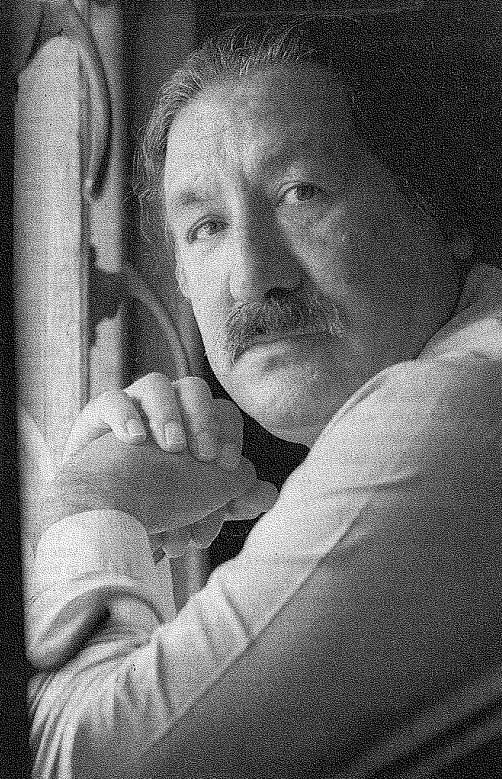
Peltier in Leavenworth in 1995 (Minneapolis Star photo)
In 1980, Peltier's lawyers received hundreds of pages of federal documents after filing a request under the Freedom of Information Act. Included in the documents received was an October 2, 1975 FBI teletype suggesting that--contrary to evidence presented in Fargo--the .223 shell casing found in agent Coler's trunk was "different" in various respects that a casing one would expect to have been fired from the "Wichita AR-15" connected to Peltier. Based on this new evidence, the Peltier defense filed a writ of habeas corpus and, in 1984, the district court had a three-day evidentiary hearing on the teletype and what it meant. The district court concluded that the teletype was ambiguous and that while it obviously did not confirm a match, neither should it be read as having eliminated the AR-15 as a possible match with the casing. The Eighth Circuit denied the application for a new trial, concluding that the teletype, had it been available to the defense in Fargo, would have been unlikely to have caused the jury to come out differently, given the other prosecution's evidence of guilt.
Questions about the government's handling of the Peltier prosecution provided fuel for writers and film producers who sought to turn Peltier into a political martyr. In 1983, Peter Matthiessen published In the Spirit of Crazy Horse: The Story of Leonard Peltier and the FBI's War on the American Indian Movement. The book, while falling short of proclaiming Peltier's factual (as opposed to legal) innocence, is a remarkably one-sided account of the case. Even Harvard law professor Allan Dershowitz, a defense lawyer with liberal political leanings, was moved to describe Matthiessen's book as "utterly unconvincing" and "embarrassingly sophomoric when he pleads the legal innocence of individual Indian criminals." Nine years after Matthiessen's book, a documentary narrated by Robert Redford, Incident at Oglala: The Leonard Peltier Story, amplified Matthiessen's criticisms of the case. The documentary hints that the real murderer of the agents, a "Mr. X", remained at large having escaped in "the red pick up" mentioned in Agent Gary Adams's 12:18 transmission on the day of the shootings.
Peltier and Robideau picked up on the "Mr. X"-as-the-real killer theory. "This story is true," Peltier says in the movie. Robideau also confirms that "Mr. X" was the real guilty party. Unfortunately for Peltier, however, one of the three persons alive who almost certainly does know who killed the agents, Dino Butler, called Peltier and Robideau liars, and told interviewers that the "Mr. X" story was made of whole cloth. Bob Robideau later admitted as much himself. In 2004, Robideau said of the 1975 killings: "They were shot in the head at close range, but they were killed honorable...I have no remorse for the actions we took against our enemies in the heat of this defensive action." In another statement, Robideau added: "I am 'Mr.X' (which is no lie) and I did kill them with the honor befitting a warrior, but they died like worms."
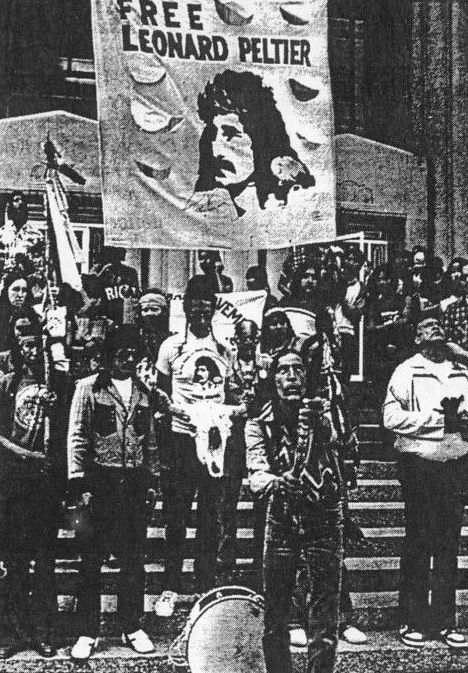
Protest for Peltier in front of courthouse in St. Louis (Minneapolis Star)
Did Leonard Peltier or Bob Robideau fire the bullets that killed Coler and Williams? We might never know. Robideau--free from retrial under the Constitution's Double Jeopardy Clause--now takes responsibility, but the strong evidence that Peltier was the person who carried the AR-15 from which the fatal bullets came convinces some trial commentators that he was the actual killer. In the final analysis, it doesn't matter. The government tried and convicted Peltier on alternative theories: either he personally killed the agents at point-blank range, or--even if he did not--he is equally guilty of their murders as an aider or abettor.
In the closing days of the Clinton Administration, Peltier's supporters mounted a full-court press for an executive pardon. FBI agents around the country responded by applying pressure on the White House not to grant the pardon. January 20, 2001 came and went without a pardon from the president--and one can only conclude that Bill Clinton, after carefully reviewing the evidence, became convinced of Peltier's guilt. It was a hard disappointment for Peltier. "When I received the news," Peltier said, "I felt my stomach curl and a feeling of nausea roll over me."
In 2005, authorities transferred Peltier from Fort Leavenworth in Kansas to a federal penitentiary in Lewisburg, Pennsylvania, where he resides today--aging and ill after thirty years of imprisonment. His next parole hearing is scheduled for 2008. One hopes that Peltier, who has in some ways been a good advocate for Native American causes while in prison, has the courage finally to admit his guilt and apologize for his role in the killing of Jack Coler and Ronald Williams. If--and only if--he does so, might parole be appropriate. Should that time come, one could see the wisdom of the remarks of Eighth Circuit Judge Gerald Heaney who, despite having voted against a new trial for Peltier, urged commutation of Peltier's sentence as a way of beginning a healing process.
Commutation
On January 20, 2025, in one of the final official acts of his presidency, Joseph Biden commuted the life sentence of Leonard Peltier, then age 80 and in declining health, to serve the rest of his sentence in home confinement. "It's finally over--I'm going home," Peltier said."I want to show the world I'm a good person with a good heart." Peltier is expected to return to the Turtle Mountain Indian Reservation, his birthplace.
